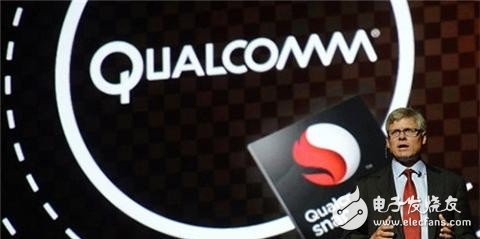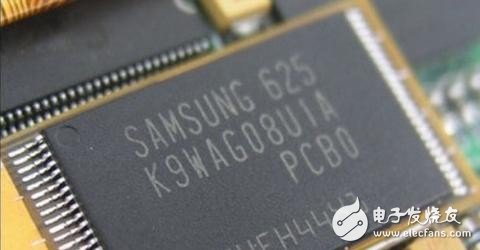This article takes stock of the layout of seven manufacturers in the field of drones, including Qualcomm, Intel, NVIDIA, Quanzhi, Lianxin, Huawei HiSilicon, and Samsung. Subversive, upstream, the more upstream, the closer to the lifeline of the entire industrial chain, the drone market is no exception. Upstream chip makers are gradually infiltrating downstream, and they have a natural advantage over the bottom up.
Qualcomm
In order to let Qualcomm inside, let your chip advantage enter the field of drones. In 2015, Qualcomm launched acquisitions and investments. In February, it acquired KMel RoboTIcs, an unmanned aircraft research and development company. At the end of the same month, it led the 3DR 50 million C round of the enemy in the original consumption field of Dajiang. In addition, Qualcomm launched the UA aircraft design platform Snapdragon Flight in September.
The most fundamental advantage of Snapdragon Flight is that it lowers the manufacturing cost and price of the drone, and then digs deeper because the Qualcomm drone chip has the same processor as the smartphone, and may include other The same components can achieve large-scale production and bring cost optimization effects. 2. The chip is highly integrated, which saves the cost of combining several high-priced modules of the drone. It is reported that the cost of each module is the cost of the drone. 30%~40%.
Compared to the current main drone chip solution, Qualcomm snapdragon flight has the smallest CPU size and the highest frequency. It has been applied to the domestic manufacturer's zero-infinite small drone product hover camera and the zero-intelligence self-timer drone dobby prototype.

Intel
As traditional PC sales continue to decline, Intel is shifting its chip business to the hot drone battlefield.
But compared to selling end products, Intel is more keen to provide solutions for drones, especially in the visual aspects of drones. Intel's biggest advantage is the infrared laser used by its RealSense technology. Compared with Qualcomm's binocular vision technology, it avoids the large amount of computer vision recognition objects and improves the accuracy.
At the market level, Intel spent 60 million US dollars in 2015 to hire Soar TyphoonH as a promotional tool for RealSense in the consumer market. It also released the Aero drone for developers, which is also equipped with RealSense technology.
In addition, Intel has already invested in two UAV companies, Airware and Precisionhawk, and acquired Recon, a wearable device and smart glasses manufacturer, and German drone manufacturing for algorithm research. AscendingTechnologies.

Nvidia
Compared to Intel's attempt to use its processor to enter the drone market to compensate for the weak PC sales, NVIDIA has no reason to enter the drone market. Its core GPU graphics processor business grew by 7% annually. It had 82% of its revenue in the first half of 2016. According to Yiou, in 2015, NVIDIA successively provided chips for Parrot and its competitors. In the drone market, NVIDIA developed the Jetson TX1 chip solution, which can be used for various image recognition and advanced artificial intelligence tasks. Drones can stay in the air for longer. It is reported that Nvidia also provided a chip solution for Dad and Dajing. Of course, NVIDIA does not limit the potential of the TX1 motherboard to the use of drones. It can also be used in robots, IoT devices or laboratory equipment. NVIDIA also provides developers with a visual library of computers such as OpenVX1.1 to help developers use the motherboard.

Full ambition
The chip manufacturer from Zhuhai, Guangdong Province, has been launching the R8 portable Internet TV solution since the beginning of last year; at CES Asia 2015, it has jointly launched the "å®å’š" smart speaker (Jizhi R16 solution) with Jingdong Intelligent; Thing's $9 computer Banana Pi successfully raised nearly 2 million US dollars (all-in-one R8 program). These three products are based on the R series chips that Quanzhi launched for the IoT market. Last August, Remix launched Remix Mini, the "first Android PC" based on the All-Chi A64 chip, and successfully raised nearly $1.5 million on Kickstarter. The main control scheme adopted by Xiaomi’s Xiaomi UAV is also the latest R16 platform of Quanzhi Technology.

Lianxin
Dajiang Elf Phantom 4 has adopted the L1 core solution LC1860. Zero-degree intelligent control also introduces a binocular vision overall solution based on the Lianxin LC1860. It is reported that Lianxin also established a joint venture with Xiaomi to establish Songguo Electronics, focusing on the field of intelligent hardware.

Huawei Haisi
Huawei HiSilicon is diving into the field of drones. Huawei HiS, its wholly-owned subsidiary, originally acquired a 70% market share in the security camera market. Subsequently, in order to put the security camera in its wings, the Huawei Haisi UAV platform was launched in July 2016. Shenzhen native startup company Zhou Xin Technology has launched a series of drone solutions based on Huawei Hisilicon chips.

Samsung
In May 2015, Samsung introduced the low-power chip ArTIk, which has three specifications. The ArTIk1 is only 12mm*12mm and sells for less than $10. It is reported that the specifications are different, in terms of processing speed, storage capacity and unlimited communication capability. Differences. The chip is aimed at Internet devices such as drones and smart furniture. The industry generally believes that ArTIk will become Samsung's killer against Qualcomm and Intel, but strictly speaking, Samsung is only a latecomer.

Power Cable,Power Cord,Vfd Cable,Armor Power Cable
Baosheng Science&Technology Innovation Co.,Ltd , https://www.bscables.com